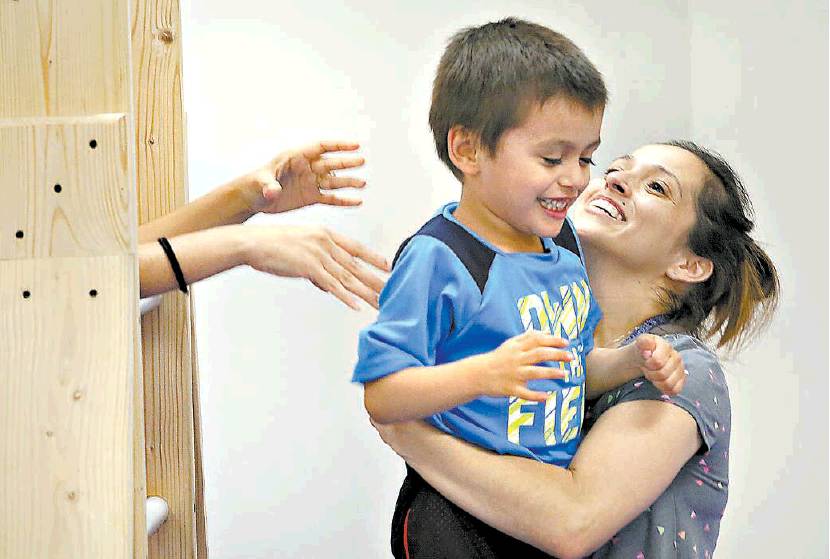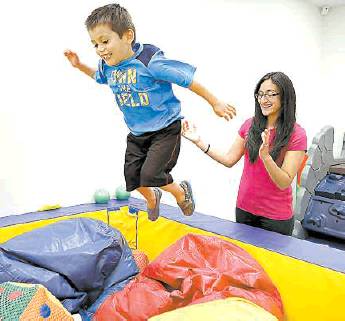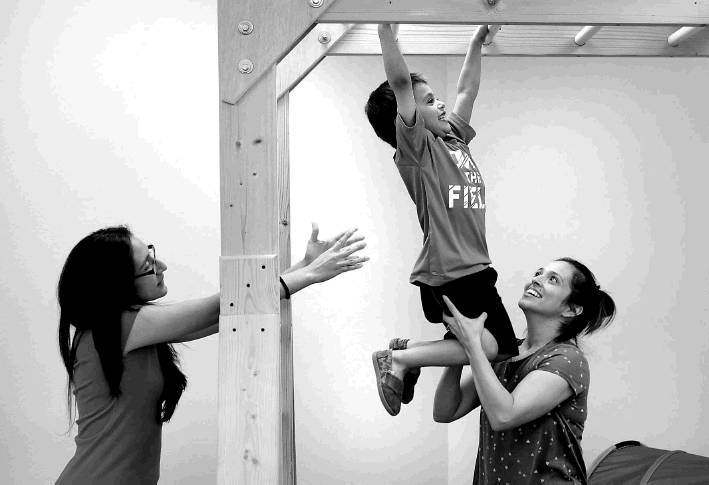Shadow that autism casts on S.A. area is long and dark
Specialized care lacking for those with disorder
By Melissa Fletcher Stoeltje STAFF WRITER
The first-ever study on the prevalence of autism in San Antonio and the surrounding area shows more than 30,000 adults and children struggle with the disorder — and there aren’t enough specialized providers to care for them.
The 151-page report, undertaken by a Houston-based health care consulting firm, gathered data from San Antonio and seven surrounding counties to find that 1 in 79 people are currently on the autism spectrum disorder, or ASD, a condition that ranges from mild to serious and is typically marked by social awkwardness, difficulty in communicating, repetitive behaviors and other problems.
The Kronkosky Charitable Foundation commissioned the study after a series of round-tables begun about a year ago revealed a lack of information about the prevalence of autism spectrum disorder in San Antonio and the struggles faced by families that experience it.
The foundation had formed the Autism Community Network in 2010, which provides early diagnoses and education about autism to families and the community, but the true scope of the issue remained “a mystery,” said Tullos Wells, managing director of the foundation.
“It’s still something of a mystery, but we know this is a huge issue in our community,” Wells said at a news conference Wednesday. “This report talks about the prevalence of autism at a granular level … People are doing amazing work (around autism) but we don’t have the resources we need, and many people lack access to the resources that do exist.”
Doug Goulden with Capital Healthcare Planning, the consulting firm that did the study, described how San Antonio serves as an autism “hub” for many parts of South and West Texas, drawing families seeking care despite the fact that the level of providers is inadequate and wait lists for diagnosis and treatment are long.
The definition of autism spectrum disorder has changed dramatically over the decades, he said, adding that “although it’s getting crisper over time, it’s still somewhat subjective.”
Autism is four times more common among males than females, Goulden said; the rate is 27 percent lower for Hispanics, a reduced number that might be linked to lack of access to care and/or genetics, he said.
The estimated economic impact of ASD in San Antonio, when such things as lost productivity and medical costs are taken into account, is around $2 billion annually, he said.
But one of the biggest problems revealed by the study is the dearth in San Antonio of highly specialized providers who treat ASD, such as pediatric neurologists, developmental pediatricians and licensed school psychology specialists. Moreover, many health care providers who diagnose or treat ASD don’t make it a focused part of their practice, Goulden said.
Effective diagnosis and treatment of autism requires “teams” of various providers working together, Goulden said.
Because of a serious backlog of families needing services, San Antonio faces a severe shortage of such teams, especially as the population grows and more families migrate from elsewhere to seek care here, he said.
Many who train in treating ASD end up moving to other cities, where they can earn more money, he said. Providers who will be retiring in forthcoming years stand to not be replaced, unless San Antonio can create more ASD training programs and entice providers to stay here.
Timing for treatment is crucial, said Dr. Melissa D. Svoboda, director of the autism program at the Children’s Hospital of San Antonio. The “gold standard” of treatment is Applied Behavioral Analysis, or ABA therapy, but for it to be most effective, a child needs to be diagnosed and treated early, optimally before age 5.
“With early diagnosis and treatment, these children don’t have to enter into the special education system, which saves taxpayer dollars and eases the impact of autism on schools and families,” she said.
Unfortunately, she said, because of backlogs and lack of providers, wait lists are long: Her own screening evaluation office, for instance, is booked through March 2017.
Compounding the problem is cost she said; ABA co-pays can be expensive, and the therapy is not covered by Medicaid in Texas.
“This situation is similar to telling a child with diabetes that they have to wait to receive life-saving insulin because of limited supplies,” she said.
Wells said his foundation will release plans in “a few months” describing how the various issues around diagnosing and treating autism in San Antonio might be overcome. mstoeltje@express-news.net
The estimated economic impact of ASD in San Antonio is around $2 billion annually.



